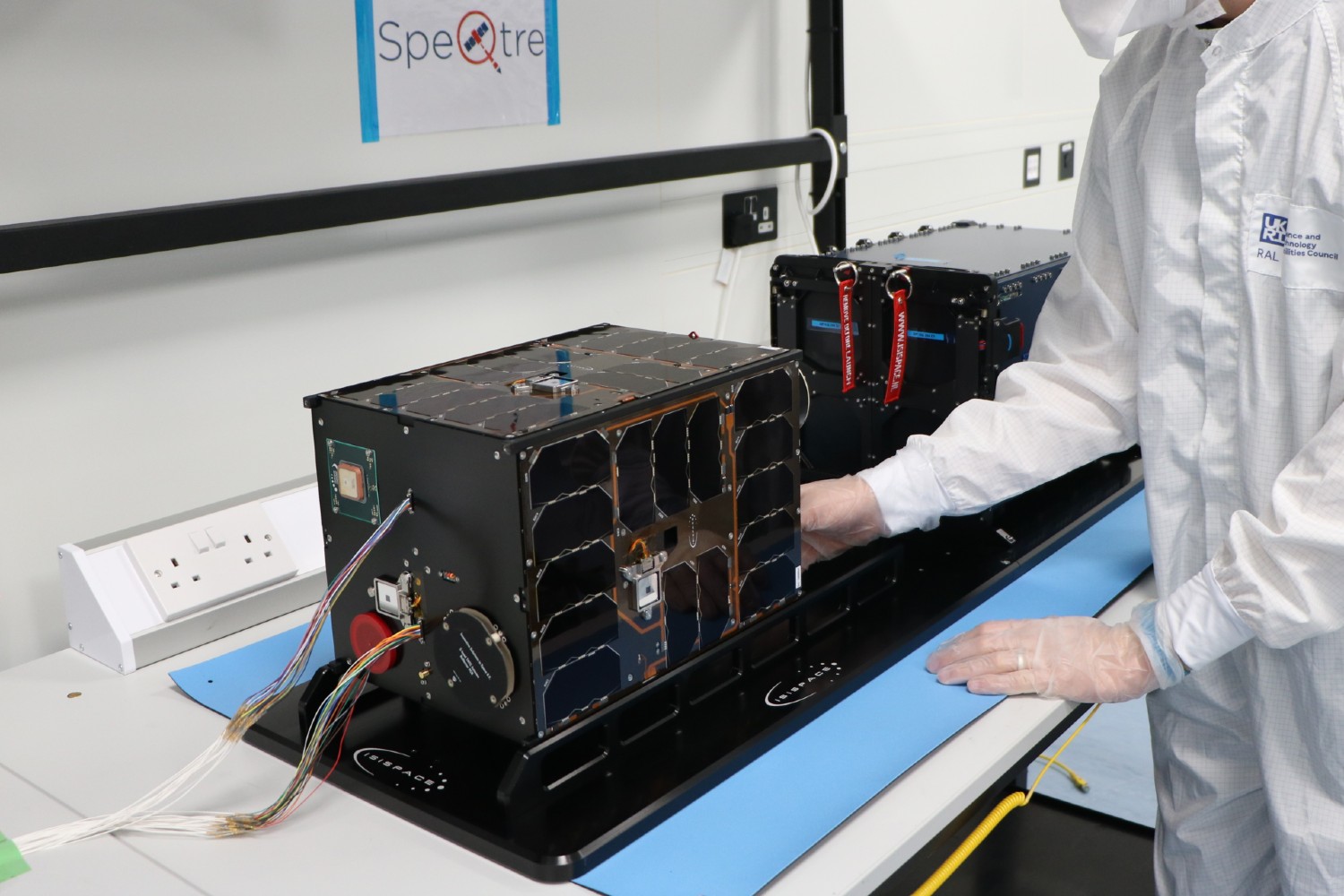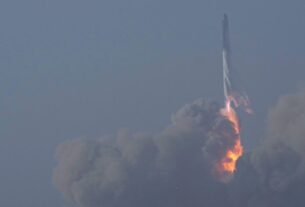While quantum computing promises breakthroughs in many areas, from medicine to finance, it also threatens to crack the encryption that currently protects everything from online banking to national security.
Backed by £7 million of UK government funding, the new SpeQtre satellite will test quantum communication technologies from space that are so secure that any attempt to eavesdrop is instantly detectable.
A collaboration between the UK’s Science and Technology Facilities Council (STFC) RAL Space and Singapore’s SpeQtral, SpeQtre has successfully launched from California on the SpaceX Transporter-15 rideshare mission.
It will explore how this technology, which uses unique properties of quantum particles to create encryption keys that cannot be intercepted without detection, could safeguard data from future cyber-attacks by next-generation quantum computers.
Drawing on the power of quantum technology
Science and Technology Secretary Liz Kendall said:
With cyber threats growing more sophisticated, there has never been a more important time to drive forward technologies that can keep us one step ahead of those threatening to wreak havoc.
By drawing on the power of quantum technologies to keep data secure, this satellite demonstrates the value of British ingenuity in keeping our country safe from cyber threats while further building on our reputation as a world leader in quantum technology.
How quantum communication by satellite works
In classical encryption, users share strings of random numbers, called encryption keys, to encode and decode their messages.
While this system keeps information secure in most cases, it carries a vulnerability, in that if the key is intercepted during transmission, the entire communication can become compromised.
Quantum communication takes a very different approach, encoding encryption keys within the quantum properties of particles.
Any interference with quantum system changes its state, meaning that any attempt to eavesdrop becomes instantly detectable.
This is a fundamental law of physics that makes quantum communication, in theory, secure against all known forms of hacking, including those that could be carried out by powerful quantum computers.
Reducing cost and accessibility
Establishing quantum communication links from space is an extremely complex feat, but one that is crucial for enabling secure, long-distance communication across the world.
SpeQtre represents a notably more difficult technical challenge: demonstrating the exchange of quantum information from a nanosatellite roughly the size of a microwave oven.
By scaling down this complex technology, the mission aims to make future quantum communication systems more affordable and accessible, positioning Britain as a world leader in this emerging field.
An ambitious approach
The SpeQtre mission has also taken a radically different approach from traditional space projects, combining off-the-shelf products with cutting-edge technology through an experimental development process.
This has enabled SpeQtre to progress from concept to orbit faster and at lower cost than comparable missions.
Andy Vick, Disruptive Technology Lead at RAL Space and UK Principal Investigator for SpeQtre, said:
SpeQtre is the first satellite developed through our agile mission facility, and a credit to the teams who have worked hard to deliver the payload for launch.
By approaching this mission with speed and creativity, they have already paved the way for more ambitious missions ahead, including future UK demonstrators.
But for now, for SpeQtre, the real fun begins as we look forward to the beginning of our quantum experiments in space.
International collaboration
Funded by UK Research and Innovation (UKRI) through the National Quantum Technologies Programme, UK contribution to SpeQtre is led by STFC’s RAL Space, the UK’s national space laboratory.
RAL Space is overseeing the mission’s space components and developing the instrument that will beam quantum signals back to Earth.
Singapore’s SpeQtral, a quantum communications company, is providing the quantum hardware, while the satellite platform is provided by ISISPACE.
Mr Jonathan Hong, Executive Director of Office for Space Technology & Industry, Singapore (OSTIn), says:
The launch of SpeQtre represents a significant milestone in the Singapore-UK collaboration on space technologies, showcasing Singapore’s leadership in space-based quantum communications.
Through the Space Technology Development Programme, OSTIn has supported SpeQtral’s developments in quantum key distribution technologies, which is vital to ensure quantum-secure communications in an increasingly interconnected world.
This mission reinforces the value of strategic international partnerships in driving innovation and advancing critical technologies.
Next steps
Following successful launch, the satellite will now enter a commissioning phase during which the teams from RAL Space and SpeQtral will verify their systems are operating as expected.
Quantum communication experiments are then scheduled to begin in early 2026.
SpeQtre aims to demonstrate its technology by exchanging quantum information between a RAL Space ground station at the Chilbolton Observatory in Hampshire and a corresponding ground station in Singapore.
This will provide crucial proof of concept for secure quantum communication from space.
Shaping the future of quantum research
SpeQtre stems from a UK-Singapore bilateral collaboration formed as part of a 2018 inter-governmental initiative to boost business and innovation between the two nations.
The project is part of the National Quantum Technologies Programme, managed by UKRI, and is also supported by OSTIn through its Space Technology Development Programme.
It is already helping to shape the UK’s future in quantum space research, such as informing the UK Quantum Networking Mission.
As well as upcoming initiatives such as the Satellite Platform for Optical Quantum Communications, a related project led by the University of York under the Engineering and Physical Sciences Research Council Quantum Communications Hub.



